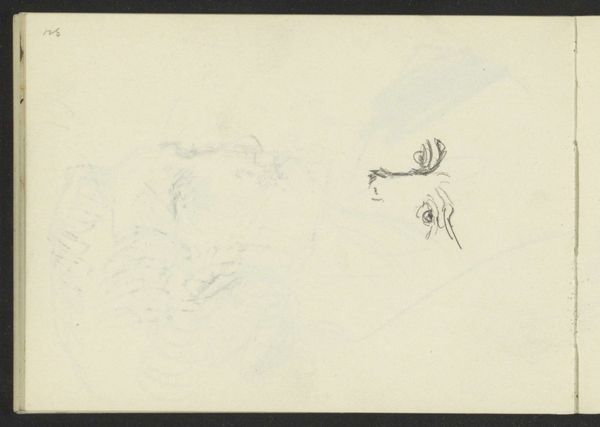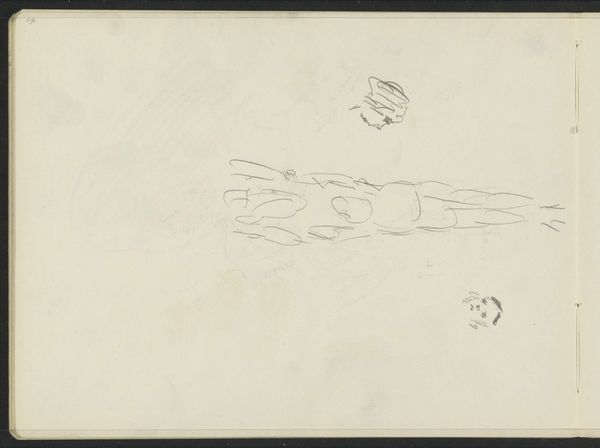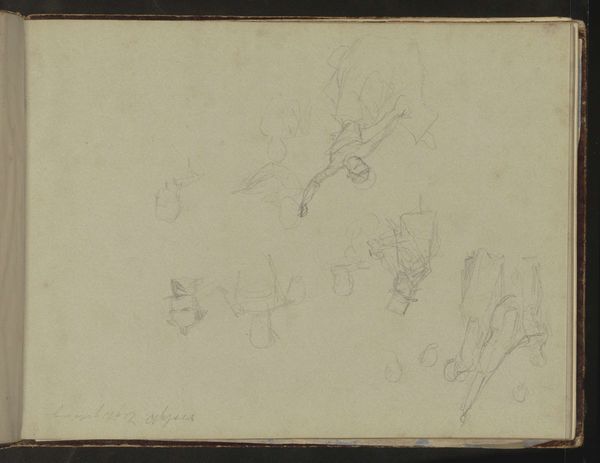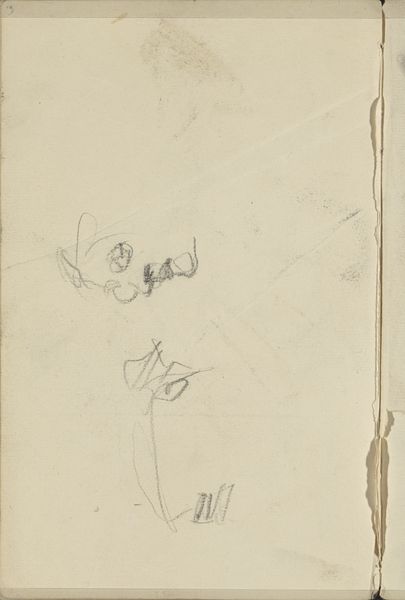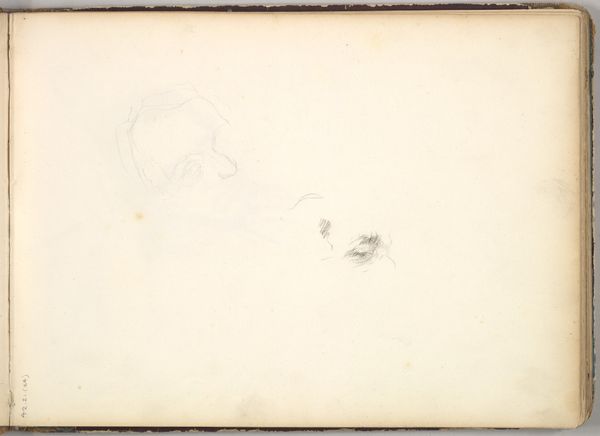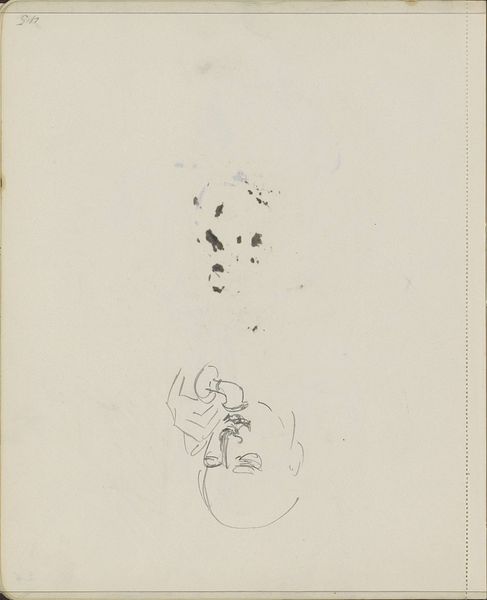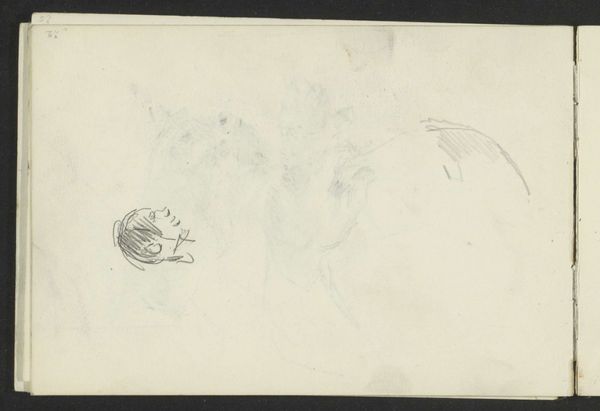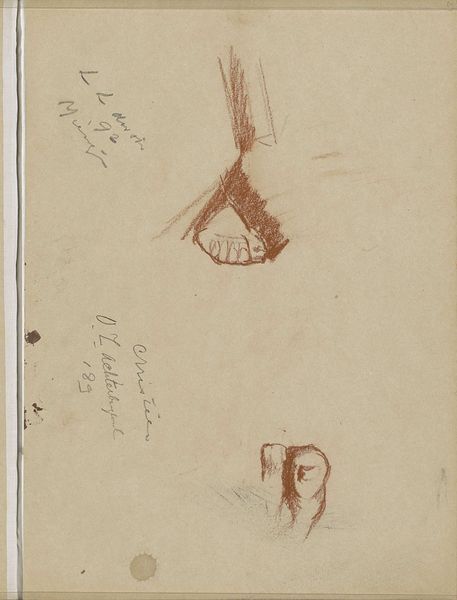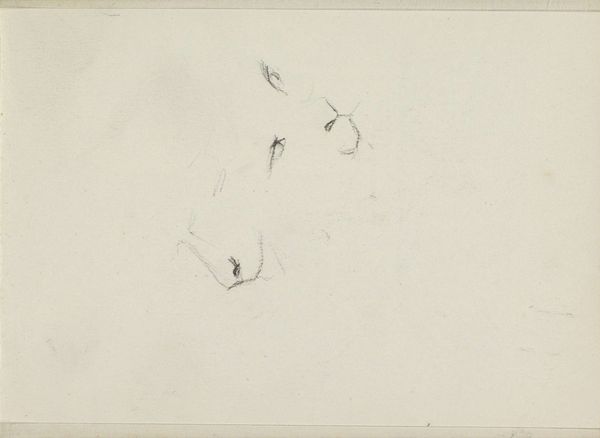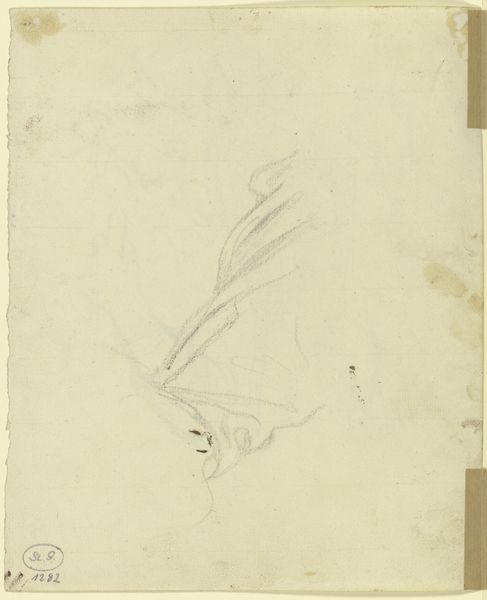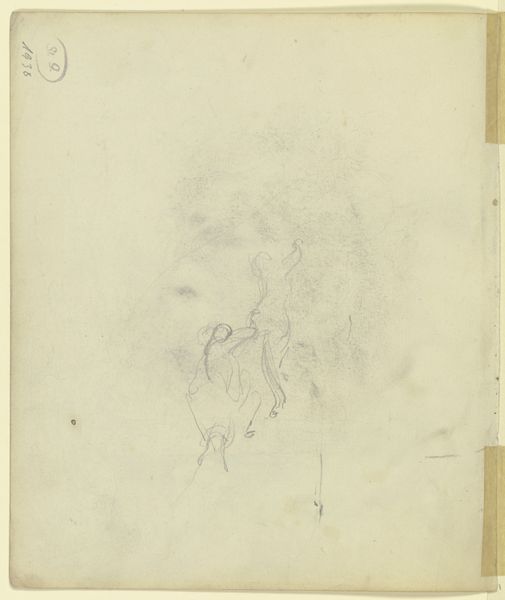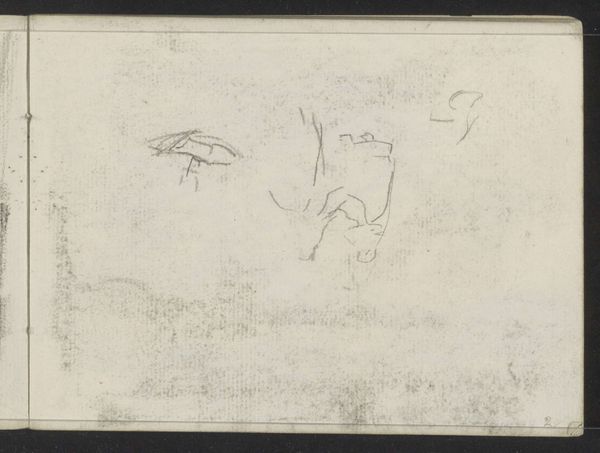
drawing, pencil
#
portrait
#
drawing
#
face
#
pencil
#
abstraction
#
line
Dimensions: height 311 mm, width 207 mm
Copyright: Rijks Museum: Open Domain
Henk Henriët made this sketch called 'Two Faces and a Face without a Mouth' with graphite, on paper. Henriët’s arresting image invites questions about the gaze, and the way that faces express, or fail to express, emotion. It was made in the Netherlands, during the Second World War, a time of political repression and censorship. So, the theme of the silenced mouth speaks powerfully to the social and cultural context. The artist was a member of the resistance, and was arrested for helping to produce false identity papers. He died in May 1945, just days after the liberation of the Netherlands. So, with that in mind, we might interpret this artwork as a visual commentary on the artist's own circumstances: on the need for secrecy and the impossibility of speaking freely. As art historians, we often use archival sources, such as letters, diaries, and newspapers, to uncover the social and political meanings of artworks. And, in this case, Henriët’s biography sheds light on the possible significance of his disturbing image.
Comments
No comments
Be the first to comment and join the conversation on the ultimate creative platform.

